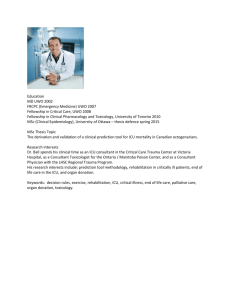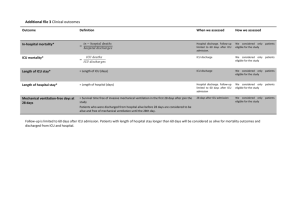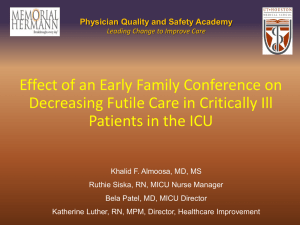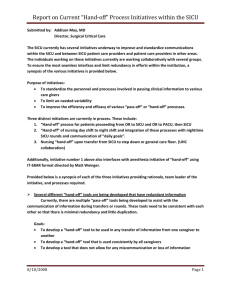Do windows or natural views affect outcomes or costs among
advertisement
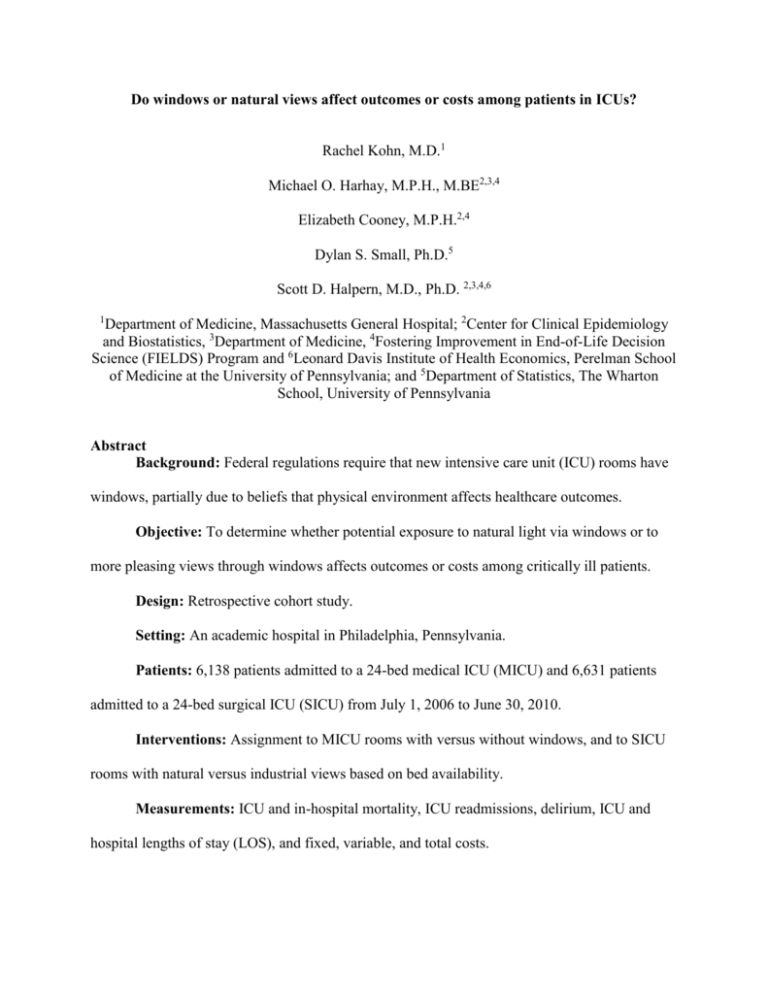
Do windows or natural views affect outcomes or costs among patients in ICUs? Rachel Kohn, M.D.1 Michael O. Harhay, M.P.H., M.BE2,3,4 Elizabeth Cooney, M.P.H.2,4 Dylan S. Small, Ph.D.5 Scott D. Halpern, M.D., Ph.D. 2,3,4,6 1 Department of Medicine, Massachusetts General Hospital; 2Center for Clinical Epidemiology and Biostatistics, 3Department of Medicine, 4Fostering Improvement in End-of-Life Decision Science (FIELDS) Program and 6Leonard Davis Institute of Health Economics, Perelman School of Medicine at the University of Pennsylvania; and 5Department of Statistics, The Wharton School, University of Pennsylvania Abstract Background: Federal regulations require that new intensive care unit (ICU) rooms have windows, partially due to beliefs that physical environment affects healthcare outcomes. Objective: To determine whether potential exposure to natural light via windows or to more pleasing views through windows affects outcomes or costs among critically ill patients. Design: Retrospective cohort study. Setting: An academic hospital in Philadelphia, Pennsylvania. Patients: 6,138 patients admitted to a 24-bed medical ICU (MICU) and 6,631 patients admitted to a 24-bed surgical ICU (SICU) from July 1, 2006 to June 30, 2010. Interventions: Assignment to MICU rooms with versus without windows, and to SICU rooms with natural versus industrial views based on bed availability. Measurements: ICU and in-hospital mortality, ICU readmissions, delirium, ICU and hospital lengths of stay (LOS), and fixed, variable, and total costs. Results: In primary analyses adjusting for patient characteristics, MICU patients admitted to rooms with (n = 4,093) versus without (n = 2,243) windows did not differ in rates of ICU (p = 0.25) or in-hospital (p = 0.94) mortality, ICU readmissions (p = 0.37), or delirium (p = 0.56). SICU patients admitted to rooms with natural (n = 3,072) versus industrial (n = 3,588) views experienced slightly shorter ICU lengths of stay and slightly lower variable costs. Instrumental variable analyses based on initial bed assignment and exposure time did not show any differences in any outcomes in either the MICU or SICU cohorts, and none of the differences noted in primary analyses remained statistically significant when adjusting for multiple comparisons. In a pre-specified subgroup analysis among patients with ICU LOS > 72 hours, windows were associated with reduced ICU (p = 0.02) and hospital mortality (p = 0.04); these results did not meet criteria for significance after adjustment for multiple comparisons. Conclusions: ICU rooms with windows or natural views do not improve outcomes or reduce costs of in-hospital care for general populations of medical and surgical ICU patients. Future work is needed to determine whether targeting light from windows directly toward patients influences outcomes, and to explore these effects in patients at high risk for adverse outcomes.




